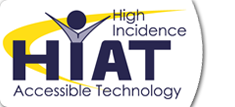| Written Expressions | Writing Conventions | Producing Text |
|
|
Producing Text
Endurance |
For students who struggle with writing endurance |
Handwriting |
Collaboration with the Occupational Therapist assigned to your school is a great first step. They are an excellent resource for students who have motor issues impacting their ability to produce text through handwriting or typing. |
One-handed keyboarding |
If a student needs resources targeted to one handed typing this website provides information. |
Slow typing speed |
Many students will improve typing speed with practice and exposure. Short, frequent practice sessions are most effective. Many students in MCPS in grades 2 through 12 have access to a Chromebook. The following quick guides offer resources that support learning to type. Note: research supports keyboarding instruction is critical to reach proficiency, 25-30 hours of practice is more beneficial than specialized strategies for function. |
Adaptive writing paper |
Shaded Lined Paper Wide (Google doc) (gr. 1-3) and Shaded Lined Paper Narrow (Google doc) (gr. 4-5): |
